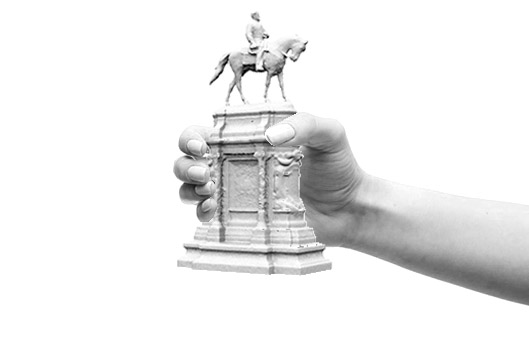Updates from a summer researcher: Ruth Blair Moyers, Masters of Architecture candidate at MIT
Preservation is not only a question of history but it is also a topic that deserves attention from the fields of architecture and urban planning. Historically, when architecture overlaps with the field of history, it is through historic preservation of buildings or architectural renovations that integrate the old with the new. Recently, however, society has been tending towards preserving history that is nearer and nearer to us in time. We have been treating certain parts of the built environment with more and more wariness, as we assign so many built objects with historic value.
In a recent conversation with the Senior Archivist at the Library of Virginia, I presented the idea that society has placed a lot of value on historic sites in the city. We both agreed that preservation in buildings can be taken to extremes. His understanding was:
“ Preservation can’t tend towards preciousness. There comes a point where you’ve got to articulate well ‘what does this communicate, why is this important.’ A building is only useful if it can be used. It can’t be just an edifice.”
This is not to say that the use of buildings to communicate history is not valuable. It can be an inimitable experience to visit an old plantation, slave quarters, or president’s home. It is true, however, that not every built object can be used in this way. Architects and historians alike must be critical in placing value and determining the function of objects in the built environment.
It is with this same approach that I am conducting research this summer on Monument Avenue, a very contentious site in the City of Richmond. My research will be focusing on the Confederate monuments, and assessing their respective value/function as historic objects, art objects and memorial objects, as well as offering a new understanding of them as phenomenal objects, whose existence has played into creating an exclusive, segregated space in the City of Richmond.

A key part of this research is to look beyond the monuments’ status as historical objects and assess their role or function as such. The monuments, while paying tribute to individuals, are inarguably artefacts of the Lost Cause, built during Jim Crow. Their function was to broadcast and reinforce the messaging of the South’s valor, honor and pride after the war. Their role as Lost Cause monuments also acted to overshadow and demean the status of freed African Americans of that time. As of today, their role has not changed much. They are indeed objects of history, but their continued participation in contemporary society as symbols of a certain past, with little indication of their status as historical objects, is problematic. It is also indicative of how slow we are as a society, and as a city, to change.
My interest and research regarding Monument Avenue is what led me to getting in touch with the Fairfield Foundation. I saw the work that Ashley McCuistion had done through the Fairfield Foundation, with the support of VCU’s Virtual Curation Laboratory, and became intrigued by the existence of the 3D scans of the monuments that she produced. This is certainly not the first historic object or site to be scanned and uploaded for the purposes of preservation. In fact, Design Heritage Lab, an MIT group led by faculty member Takeheiko Nagakura took on the 3d scanning of Machu Picchu, a project that had the dual purpose of preserving the “cultural heritage of humanity” and assisting in conservation efforts. Since then, groups at MIT have gone on to document other historical sites, including a monastery in the monastic state of Mont Athos, Greece and Lifta, a depopulated Palestinian village in Jerusalem.
The possibility offered by three dimensional documentation to experience history in either a virtual way or scaled down as a physical model could be incredibly freeing for architects, and designers, but also for contemporary cities, as a way of allowing them to change, develop and alter the landscape of public space so that it isn’t held prisoner by its own history. However, the creation of these 3D models is also political, asking people to acknowledge the objecthood of monuments, as artefacts that can be altered, moved, removed, scaled, digitized and regardless of what happens in real space, preserved.
Suggested Reading
Confederate Monuments and Civic Values in the Wake of Charlottesville / Dell Upton
Changing The Subject: Race and Public Space / Mabel O. Wilson + Julian Rose
https://www.artforum.com/print/201706/changing-the-subject-race-and-public-space-68687
Monument Avenue Commission Report
(no progress has been made to follow through with the recommendations produced by the commission, largely due to legal concerns over a Virginia Statute that protects monuments and memorials to war veterans.)


This is a really interesting take on the concept of city public spaces being held captive by their history using Monument Ave. in Richmond aa a case in point.